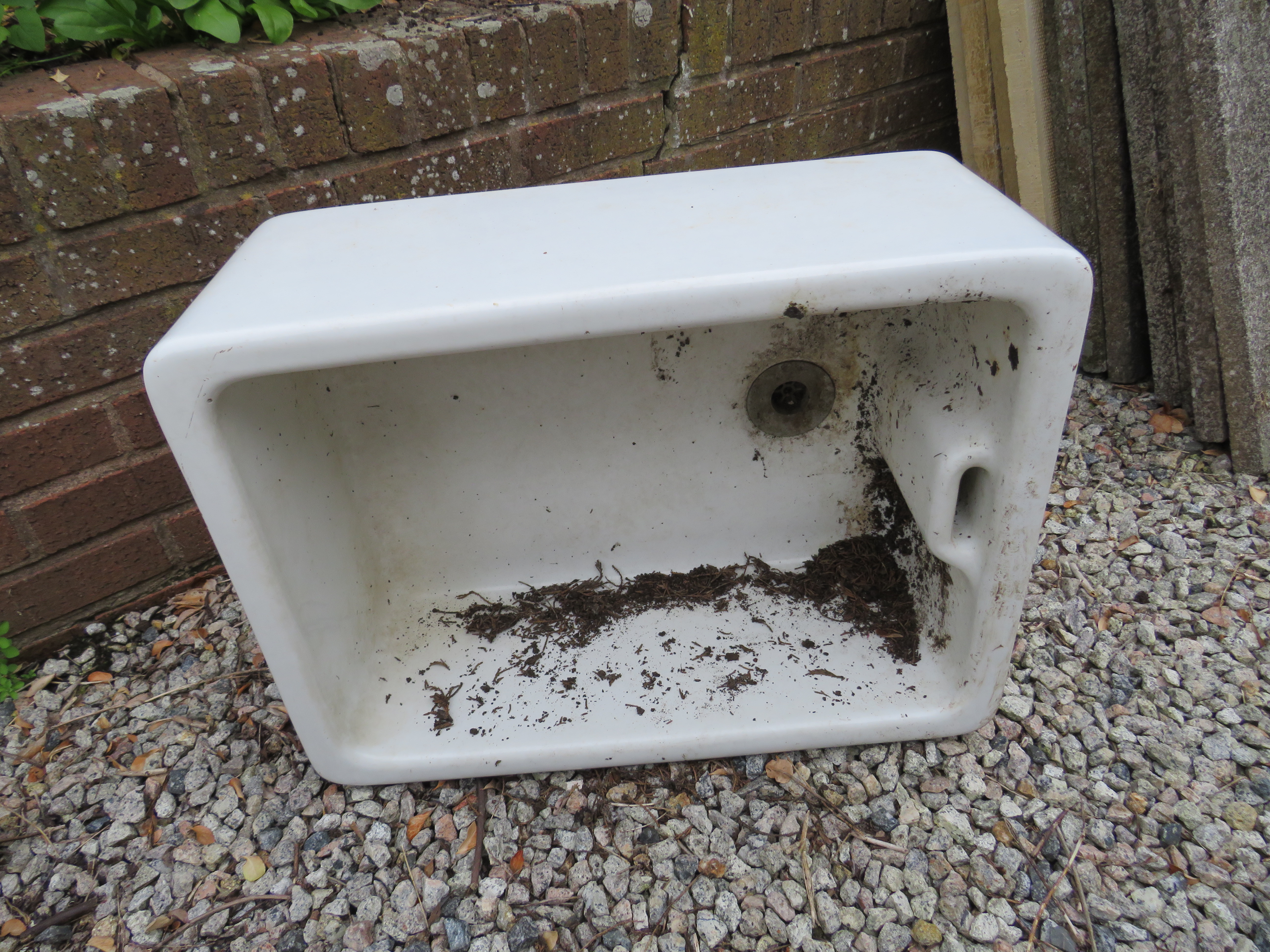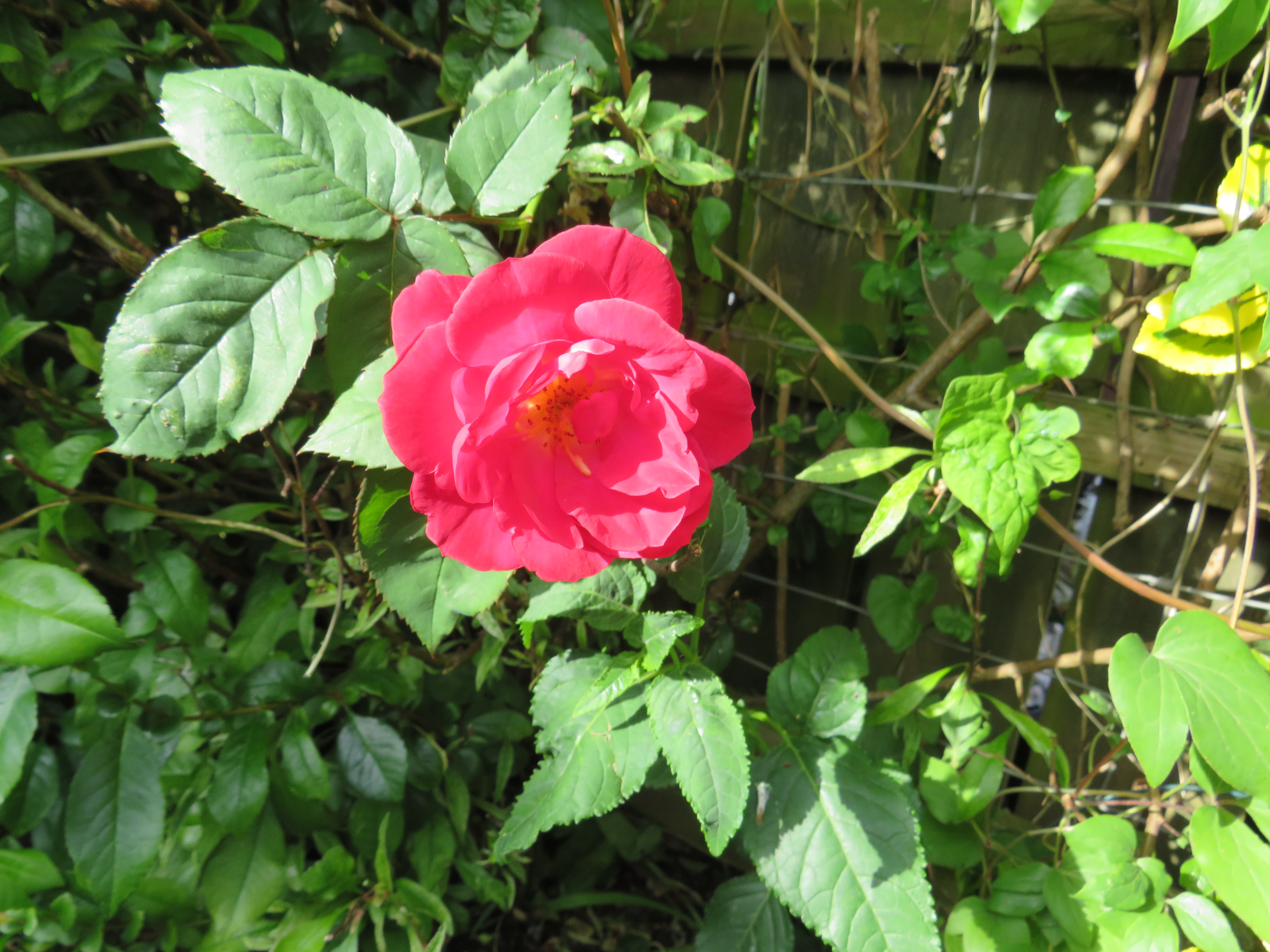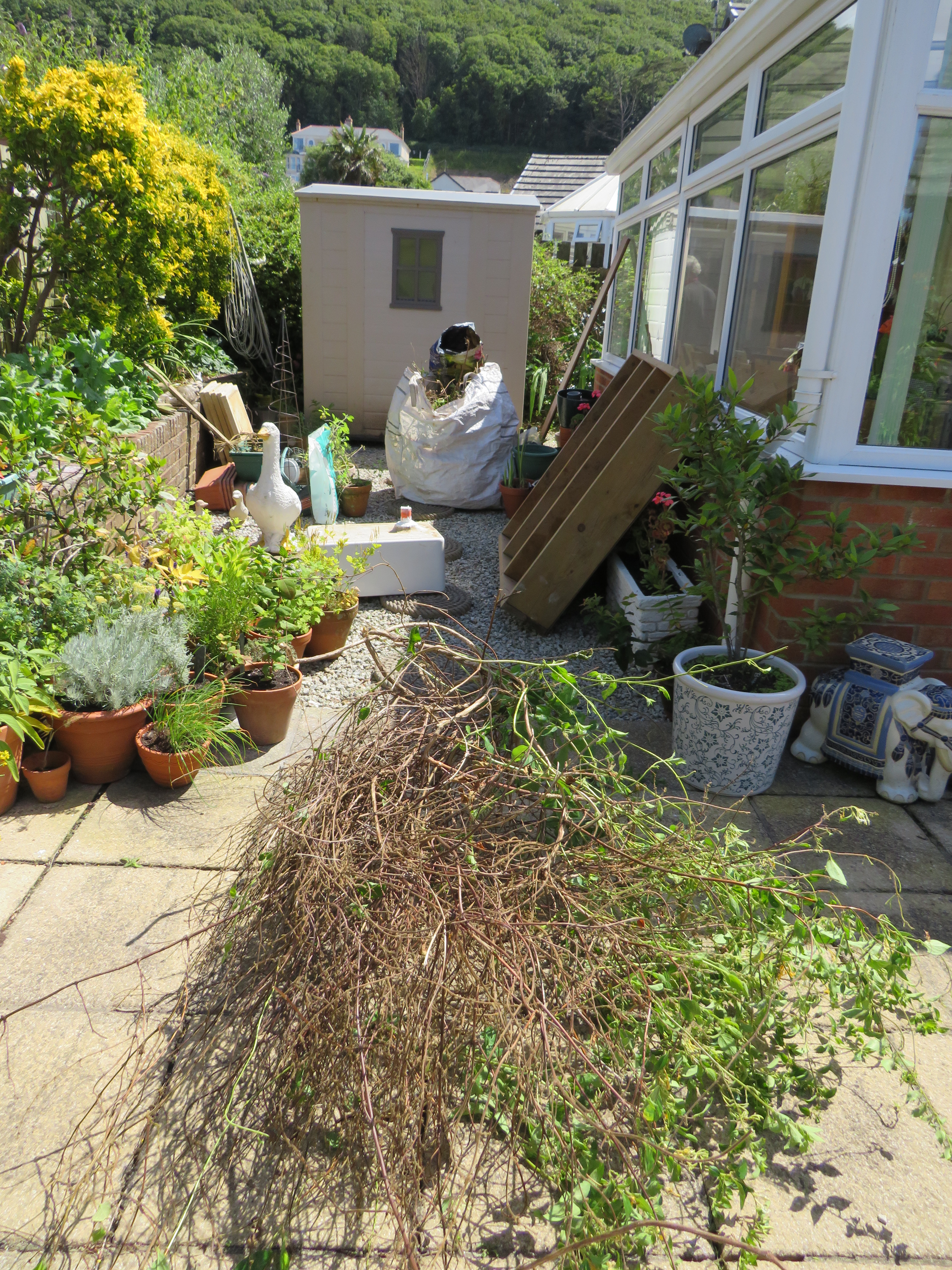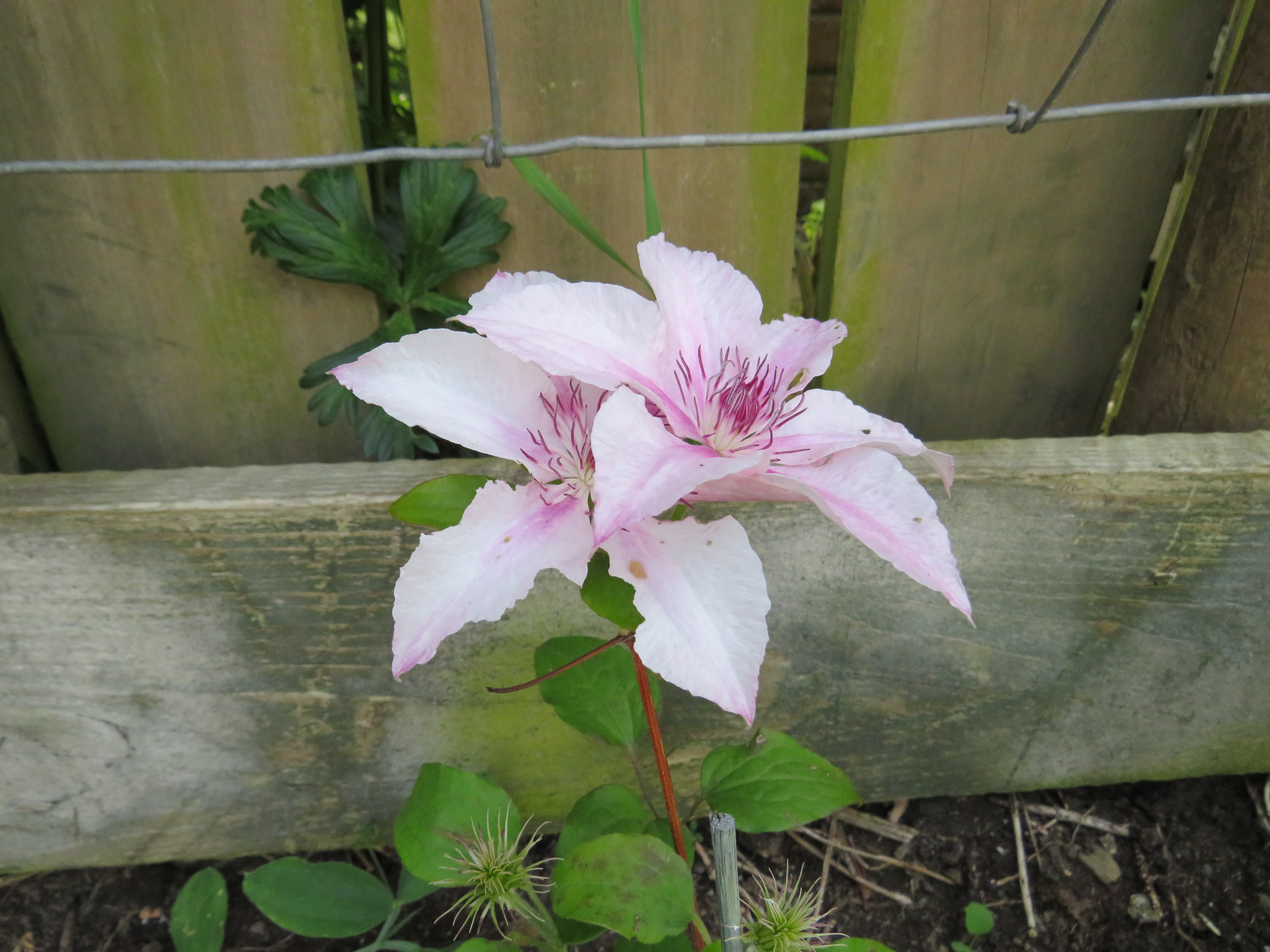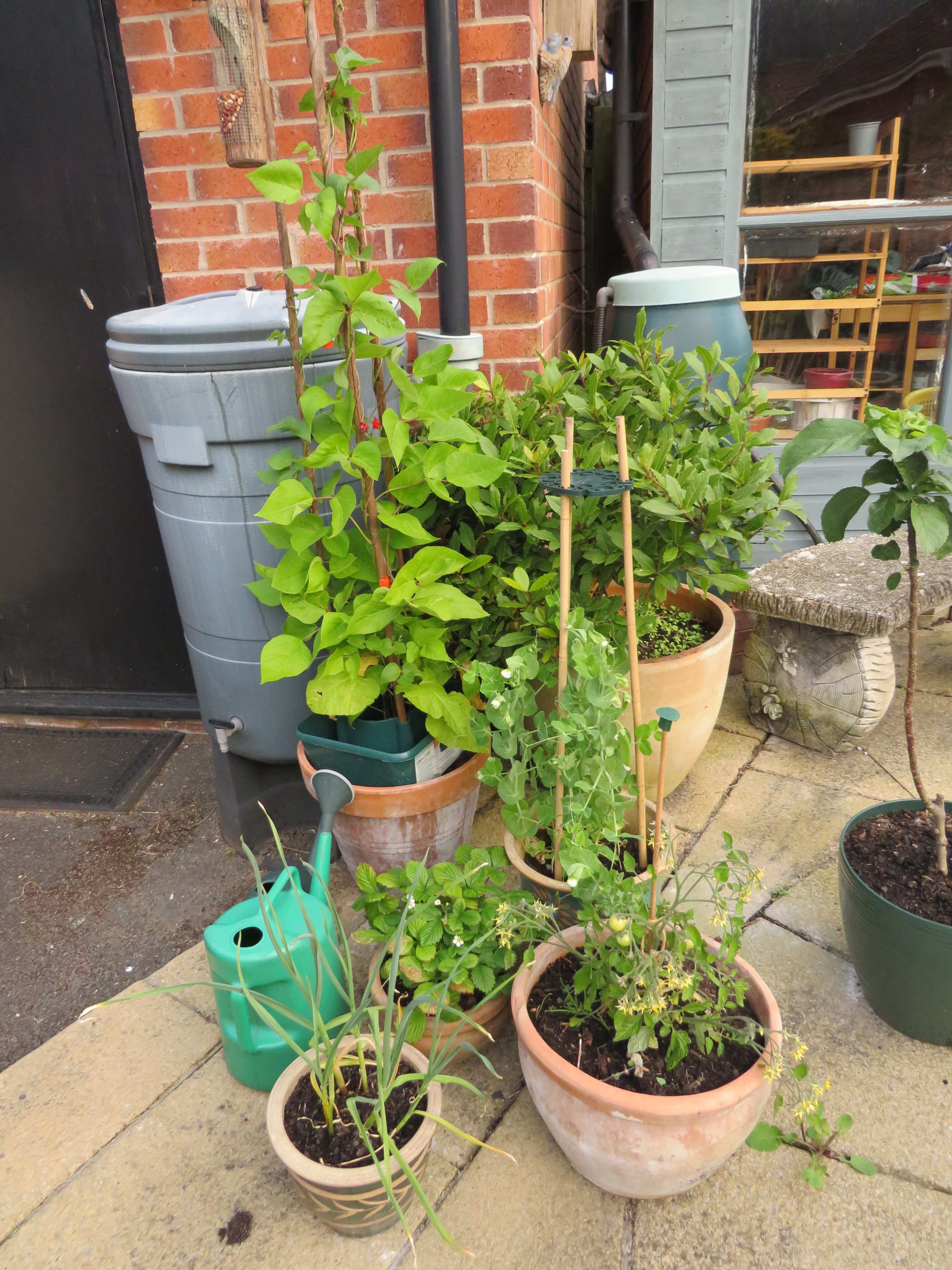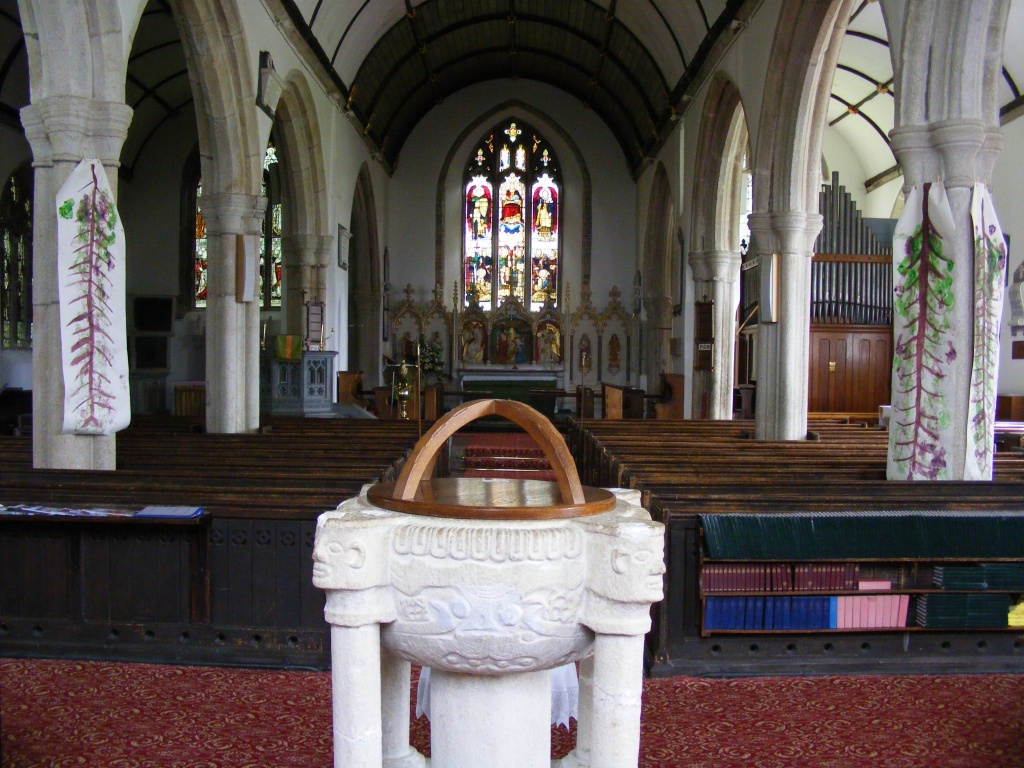I am pleased to report that the summerhouse now has a roof. It was a tad concerning watching my trusty assistant climb on a wooden roof whose strength was an unknown quantity but this passed without incident. Now if I could find a way of getting baked on masking tape glue off the windows all would be well (I’ve tried white spirit).
The pond/sink is causing a few issues as sinks by definition have a plug hole. This isn’t the sort that you could just put a plug in, (supposing I had one) as it is flush with the bottom of the sink. First attempt was fibre glass, which didn’t work, strange this as this is how the fisherman of my acquaintance fixes holes in his boat. I can only hope, for his sake, it works better on boats. Next attempt was to try to seal some spare shed roofing felt over the hole. I was never very convinced by that one and it failed miserably. Now we’ve emptied half a tube of the sealant you put round baths into what remains unsealed of the fibre-glassed plug hole. We are waiting to see if that works.
Flowers are flowering bravely, with a rose, a fuchsia and a hydrangea coming to light. The convolvulus is still convoluting away. Annoyingly, much of it is coming from the other side of the fence so can’t be dug up. I’ve harvested the first three tiny tomatoes from my solitary tomato plant. The remaining tomatoes look like they may be pea sized.
The other ‘big task’ – moving the once moved shed again, is also accomplished. This was necessary because it really was too wobbly. So it was back with the plastic rollers to pull it out of the corner in order to put down some large paving slabs before rolling it back. This all makes it sound remarkably simple. It wasn’t. The shed had to come forward and be shoved/rolled round a corner and back, ideally without one of use getting stuck behind it. While the corner was clear I took the opportunity to cut back whatever is going all along the side fence. This is a bed that is untouched so far. It seems to be something in the honeysuckle family but with much smaller flowers. The ends are leafy and flowery but underneath is a whole load of dead looking bush. Hacking away at it was not easy and my arms are tastefully decorated with scratches. Much as I hate digging up living things, I think the only way to deal with this bed will be to dig it all out. I will wait until the what ever it is has stopped flowering and then hope that it wasn’t holding the fence up. Reinstating the shed in the desired position has meant that I could at last put away things that have been lying around in the garden because it ‘wasn’t worth putting them away as the shed would need to me emptied’.
What’s next on the agenda? Well if the sink holds water, planting the pond. Much as I don’t want to fill the tiny garden with sheds and water butts, I am debating a new water butt; I fancy one of those that double as a planter. I’m sure I’ll find more jobs to add to the list
.

